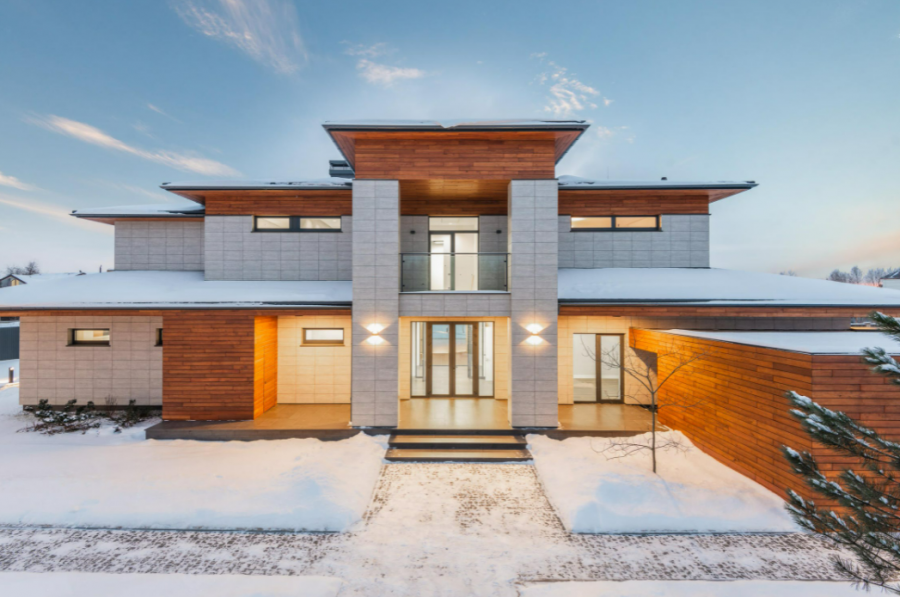Everything old is new again, at least it would seem so with prefabricated home construction. Prefab homes aren’t new. In fact, the famous Sears Roebuck Co. sold half a million prefab homes between 1910 and 1940. However, in the later half of the twentieth century, they became less popular. However, prefabs are now one of the fastest-growing sectors within the construction industry. Traditional home building is now being referred to as stick-built homes as it refers to the process of building a home stick by stick and board by board. Today, prefabs have expanded to wall-by-wall construction or entire modular homes built off-site and then transported to the property location to be installed. Here is a closer look at the differences.
The Build Process
The stick-built process entails building an entire home from scratch on site. On the one hand, you can see the process as it evolves. You have an opportunity to visit the site for a frame walk with your contractor. This gives you a perfect opportunity to make amendments to the plans before they get to putting up plastered walls. On the other hand, you are subject to the weather. This can be costly in delays and can subject the framing materials to exposure and water damage. Moist timber tends to warp and cannot be used until it is thoroughly dried out.
Modular homes are produced in an assembly-line process inside of a climate-controlled facility. While you do not get to see the build stages, you are not hindered by inclement weather. When the modules reach the property site, they are ready to go with all the insulation, wiring, plumbing, flooring, windows and doors already built-in. At that point, it is mostly assembly rather than construction.
Price
Prefab homes tend to be more affordable than traditional stick-built homes for a number of reasons. First, you save money on labor. Because construction takes less time—often months less—you save on paying for labor. You also save on materials. Building materials that are stored onsite for traditionally constructed homes may be damaged by inclement weather, pests, or vandals. They could also be vandalized by passersby or delinquents. Because onsite construction takes less time for prefab homes, there’s less of a chance that you’ll need to replace damaged or stolen materials.
However, you do need to keep in mind that with prefabricated homes, the price you’re originally given may not be your actual total. You need to consider the cost of the land, labor, foundation, and crane.
Timelines
Traditional home building, or stick-built homes, may be on a timeline, but invariably that time frame has to be adjusted. There could be several reasons where the constraints of time impede make it difficult to meet certain milestones or obstacles.
For example, rebuilding following a disaster needs to be done as quickly as possible. Perhaps leaving the old home means your new one must be ready by a certain date. Family circumstances, such as the arrival of a new baby or the children’s school year, are also issues one must contend with when arranging for new home construction. If your new home can’t be finished on time, you and your family may have to make arrangements to stay in a rental, at a hotel, or with friends.
It takes an average of seven to eight months for traditional home construction to finish a house, and custom-designed homes take even longer. Meanwhile, prefab home construction can be completed in as few as three to five months. The prefab process is streamlined and rarely faces delays. Aside from that, the foundational work on-site can be performed while the prefab construction is being done simultaneously.
Prefab Wall Frames
Stick-built construction requiring timber framing is often considered the most dependable construction method for price, strength, durability and reliability. However, you will find that prefab wall frames precisely manufactured in a climate-controlled factory using state-of-the-art computer cutting and assembly equipment advance this tradition, providing all that is expected from the expensive alternative only at a lower cost.
You will also find that you have design flexibility while maintaining structural adequacy. The installation, by comparison, is quick and easy. There is minimal risk of site theft as materials are not stored on-site awaiting utilization. The design of prefab wall frames also takes into account the local wind conditions, the expected loads on the roof and simplified installation. This method of building applies to extensions, new homes, or smaller unit developments.
Quality and Design
There was once a stigma regarding the lifespan and resale value of prefab homes. With the sound construction and high-quality materials contractors use today, prefab construction occurring indoors, and materials facing less exposure to the elements, prefab homes are sound and reliable. The lack of exposure establishes stronger structural integrity as construction materials are not prone to the movement typically derived from swelling or shifting.
Prefab home designs are not the “cookie-cutter” style of their early designers. You now have the seemingly endless possibilities of customization working with your builder to create the design you love. With the rising popularity of prefab construction, depreciation of these designs is a thing of the past due to higher standards and improved processes.
A variety of factors can impact your home’s resale value whether it is lot size, location, obvious curb appeal and other issues. Generally, there is no longer any difference in prefab construction value versus traditional construction. Both are built to last and prove to appreciate over time. Either way, your house is your home in addition to being one of your best investments.
